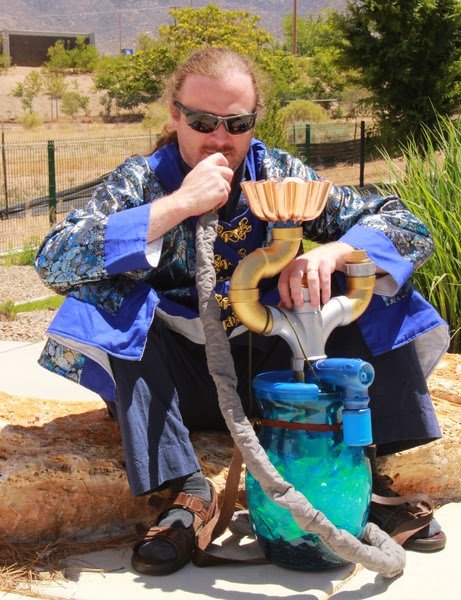Fabric: 100% cotton twill (bottom weight)
Pattern: drafted from a patent from 1883
Year: 1883
Notions:thread, flat steel boning, spring steel boning, busk, 1 spool of grossgrain ribbon, size 00 eyelets, 2 small buckles, bias tape both narrow and wide single fold.
How historically accurate is it? 60%ish? I had to modify the pattern pretty heavily to fit me and I am not sure how accurate my choices are. Also bias tape is not historically accurate for bone casings.
Hours to complete: 30 to get the pattern to fit and 20 to make the final, so 50 hours total
First worn: pictures only
Total cost: $7 for the ribbon and the 2 buckles. Everything else was from my stash.
Notions:thread, flat steel boning, spring steel boning, busk, 1 spool of grossgrain ribbon, size 00 eyelets, 2 small buckles, bias tape both narrow and wide single fold.
How historically accurate is it? 60%ish? I had to modify the pattern pretty heavily to fit me and I am not sure how accurate my choices are. Also bias tape is not historically accurate for bone casings.
Hours to complete: 30 to get the pattern to fit and 20 to make the final, so 50 hours total
First worn: pictures only
Total cost: $7 for the ribbon and the 2 buckles. Everything else was from my stash.
As I mentioned in the previous post about HSM, I wanted to make a corset based off of a patent for 1883. This turned out to be a real challenge for me. I really did not think this corset would be as hard to fit as it turned out to be! I must admit that I am in great need of more experience making corsets. I have made 3 pairs of Elizabethan stays, 2 regency stays, several underbusts and one Victorian corset. However, all of the underbusts have used the same pattern and the Victorian corset fit on my first try.
I am going to cover what all went into modifying the corset pattern to fit me.
Draft 1: I copied the patent into to Photoshop and increased the size until the measurements matched mine in the bust, waist and hips. This mock up turned out to be a complete failure as while the bust measurement was correct, the cup size was way off and the rib cage (which I did not take into account when making the pattern) was way to small. This first mock up hurt too much to lace over the ribs and still gaped at the bust.
Draft 2: I modified the pattern to be looser around the ribs and took in the cups a bunch. On this second mock up, I see that the corset is way too big! The hips are too big and the waist closes without barely any reduction.
Draft 3: I reduced the waist and the hips by about 4 inches and made a new mock up. The hips and the waist are much better, but the bust is too big, particularly in the cup area. Also, the corset is to short and will need to be longer to fit me.
Draft 4: I spent a bunch of time online to figure out the bust shaping. I ended up raising the tops of the cups and shaping them to curve inward at the top. The shaping of the front 2 panels for the patent seems to be for a very well endowed girl and may be intended to be a demicup style. I could not get the curved shaping of the front panels to fit me without making the corset an overbust pattern. I also elongated the whole corset. This mock up fit pretty well. However the bust wrinkled something terrible on this mock up, but only along the boning seam, suggesting this is a sewing issue rather than a fitting issue.
To get an idea of the difference between the original and my pattern here is the patent again and my final pattern pieces for comparison.
Examining the final mock up, I thought that my construction method might be causing the wrinkling. For modern underbust corsets and even for my standard Victorian corset, I have used a construction method that I have heard called a bunch of things. I usually call it the welt seam method. I learned about it on the corsetmakers live journal forum ages ago. The method is posted here by volutelady. I have found this method to be really simple to work with. However, it does make for fairly thick seams and I have always used this method on underbusts or on a fairly straight seamed (gusseted) overbust corset where the seam thickness did not make much difference. I don't think this is an historical method however and felt I could learn a new technique.
The corset is boned with both flat steels and spiral steel bones. I am a bit worried about the stability in the bias tape boning channels, so I may go back and floss the ends of the boning channels to stabilize the boning and add some detail.
The corset has not yet been broken in, and I think it will come much closer to closing in the back once I break the corset in a bit. Overall I am pretty pleased with the pattern and the fit is comfortable. I may go ahead and remake the corset using my coutil once I break this one in and get a better idea of the final fit.








